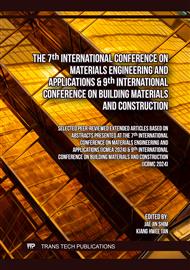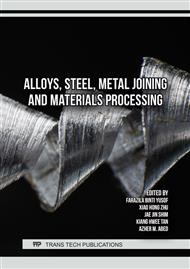p.15
p.21
p.27
p.33
p.41
p.51
p.67
p.77
p.87
The Influence of Sample Thickness on the Bending Fatigue Performance of PBF-Lb 316L Material
Abstract:
Additive manufacturing, specifically Laser Powder Bed Fusion (PBF-LB), has gained prominence for its capability to produce complex near-net-shaped components. While PBF-LB offers advantages such as lightweight construction and cost-effectiveness, post-processing remains crucial to meet specific design requirements. This study investigates the post-processing technique of severe shot peening (SSP) on PBF-LB-manufactured 316L stainless steel, a material widely used for its favorable mechanical properties and corrosion resistance. The research focuses on the enhancement of bending fatigue properties through SSP treatment, examining the influence of material thickness on fatigue behavior. Comparative analysis reveals the effectiveness of SSP in significantly improving fatigue strength irrespective of variations in material thickness. Mechanical properties are explored for different thicknesses subjected to SSP treatment. Electron Backscatter Diffraction (EBSD) is employed to scrutinize the surface properties of the samples, providing knowledge on the microstructural changes induced by SSP. The study contributes to the understanding of the role of material thickness in the context of SSP treatment, offering a comprehensive exploration of the mechanical and fatigue characteristics of PBF-LB-manufactured 316L stainless steel.
Info:
Periodical:
Pages:
41-47
Citation:
Online since:
July 2024
Keywords:
Price:
Сopyright:
© 2024 Trans Tech Publications Ltd. All Rights Reserved
Share:
Citation:



